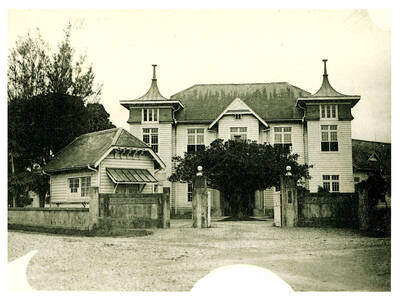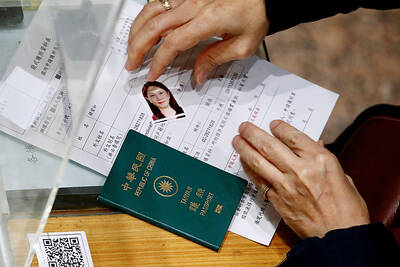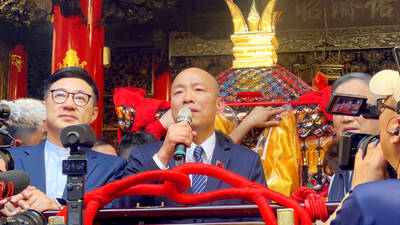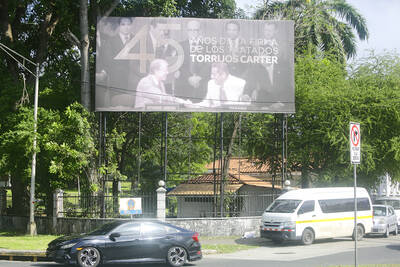The stars were hot, literally, on the red carpet at Sunday night’s 60th annual Emmys awards — and that meant the sweeping trend on A-list actresses were updos.
Heidi Klum wore one and so did Mariska Hargitay. Same ’do for Marcia Cross, Vanessa Williams, Julia Louis Dreyfus and Sandra Oh.
The perfect accessory? Dangling earrings, such as Debra Messing in 19th-century diamond fan-pendants from Fred Leighton.
There also were many strapless gowns — on the likes of Tina Fey and Teri Hatcher — and, in a nod to an emerging catwalk trend, asymmetric looks as seen on Christina Applegate and Vanessa Williams.
But almost to a person the looks were anything but trendy, sticking instead to safe silhouettes, boldly elegant jewelry and flattering colors.
Take, for example, Oh, one of the night’s fashion winners, who previously had done time on a few worst-dressed lists. She came in a retro-style black lace dress by Oscar de la Renta with a ribbon sash and a few sparkles on the skirt. They matched her gleaming 5.5-carat (each!) emerald-cut diamond earrings by Bulgari.
Applegate didn’t disappoint in her much-anticipated red-carpet return after breast-cancer surgery in a dramatic, sweeping gown in ice blue with metallic patches.
“I think Applegate was one of the best dressed of the night,” said stylist Marie Alice Stephenson. “She was glamorous, elegant and she pushed it.” Christina Hendricks did her 1960s-era Mad Men character justice in a curve-hugging emerald green gown, which complemented her red hair that she wore in an up-style twist. Louis-Dreyfus showed off her trim figure in a salmon-colored Narciso Rodriguez dress with a fitted shiny bodice — complete with a sliver of skin showing under the bust.
Nicolette Sheridan wore a sleek strapless gown by Angel Sanchez in purple, a trendy fall color. Laura Dern did purple too; Holly Hunter wore a plum Jenny Packham gown with a jeweled waist.
Fey liked the color too, leaving her glasses at home, wearing her hair down and choosing a sexy sweetheart eggplant-colored gown by David Meister in what seemed an obvious attempt to avoid Sarah Palin comparisons.
Two of TV’s brightest stars were Brooke Shields in a hot pink lipstick-color (pun intended) strapless gown with a ruffle down the front and brooch on the side of her waist by Badgley Mischka. Klum had the opportunity to take the most risks, as she was expected to adopt many looks throughout the night: She planned no fewer than six as she extended her red carpet walk in a custom Giorgio Armani Prive gunmetal metallic gown with a one-shoulder capelet to hosting duties on the broadcast.
“It was a mature choice for what Heidi normally wears,” said Klum’s stylist Maryam Malakpour, but Armani won her over by sending a personal note to congratulate her on her Project Runway nomination.
Fellow model and reality host Padma Lakshmi wore a short gold Monique Lhuillier dress, showing off her legs. “When you’re working with a model, there is so much choice,” said her Stephenson, who worked with Lakshmi. “They rarely look bad in a dress.” Powerhouses Oprah Winfrey and Susan Sarandon, in a draped jersey look by her friend Donna Karan, both opted for red, and Hargitay was in a soft one-shouldered, marigold-yellow gown by Carolina Herrera.
Still, there were plenty of neutrals.
Jennifer Love Hewitt — her hair in a bedhead bun — told E! that her white-with-black strapless gown by Herrera was an easy choice, and Williams’ splashy white-and-black print dress by Kevan Hall had a jeweled strap that went from her shoulder to just below the waist.
White was also worn by Kyra Sedgwick, whose dress by L’Wren Scott featured diamond embroidery.
The black fan club included America Ferrera in a bubble-hem dress and Hollywood siren-style red lipstick; Chandra Wilson in a gathered Tadashi Shoji halter gown; Kate Walsh in gown with alternating rows of crystals to go with a complete set of diamond-and-platinum jewelry by Neil Lane; and Dana Delaney in a vintage gown splashed with an Art Deco-style beaded embellishment.
Veteran star Glenn Close and Broadway transplant Kristin Chenowith both wore black Armani.
Black is tricky on the red carpet because it doesn’t pop, said Stephenson. “America Ferrera had a bold Fred Leighton necklace and a shorter hem — and that’s the way to do it. If you don’t do something spectacular with black, it can fall short.
Felicity Huffman literally sparkled in a split-neck silver gown and she showed off a sleek bob haircut, and Eva Longoria wrapped herself as a gift to escort and husband Tony Parker in a short strapless number with fringed tiers by Marchesa. He wore a complementary silver-gray suit.

April 14 to April 20 In March 1947, Sising Katadrepan urged the government to drop the “high mountain people” (高山族) designation for Indigenous Taiwanese and refer to them as “Taiwan people” (台灣族). He considered the term derogatory, arguing that it made them sound like animals. The Taiwan Provincial Government agreed to stop using the term, stating that Indigenous Taiwanese suffered all sorts of discrimination and oppression under the Japanese and were forced to live in the mountains as outsiders to society. Now, under the new regime, they would be seen as equals, thus they should be henceforth

Last week, the the National Immigration Agency (NIA) told the legislature that more than 10,000 naturalized Taiwanese citizens from the People’s Republic of China (PRC) risked having their citizenship revoked if they failed to provide proof that they had renounced their Chinese household registration within the next three months. Renunciation is required under the Act Governing Relations Between the People of the Taiwan Area and the Mainland Area (臺灣地區與大陸地區人民關係條例), as amended in 2004, though it was only a legal requirement after 2000. Prior to that, it had been only an administrative requirement since the Nationality Act (國籍法) was established in

Three big changes have transformed the landscape of Taiwan’s local patronage factions: Increasing Democratic Progressive Party (DPP) involvement, rising new factions and the Chinese Nationalist Party’s (KMT) significantly weakened control. GREEN FACTIONS It is said that “south of the Zhuoshui River (濁水溪), there is no blue-green divide,” meaning that from Yunlin County south there is no difference between KMT and DPP politicians. This is not always true, but there is more than a grain of truth to it. Traditionally, DPP factions are viewed as national entities, with their primary function to secure plum positions in the party and government. This is not unusual

US President Donald Trump’s bid to take back control of the Panama Canal has put his counterpart Jose Raul Mulino in a difficult position and revived fears in the Central American country that US military bases will return. After Trump vowed to reclaim the interoceanic waterway from Chinese influence, US Defense Secretary Pete Hegseth signed an agreement with the Mulino administration last week for the US to deploy troops in areas adjacent to the canal. For more than two decades, after handing over control of the strategically vital waterway to Panama in 1999 and dismantling the bases that protected it, Washington has